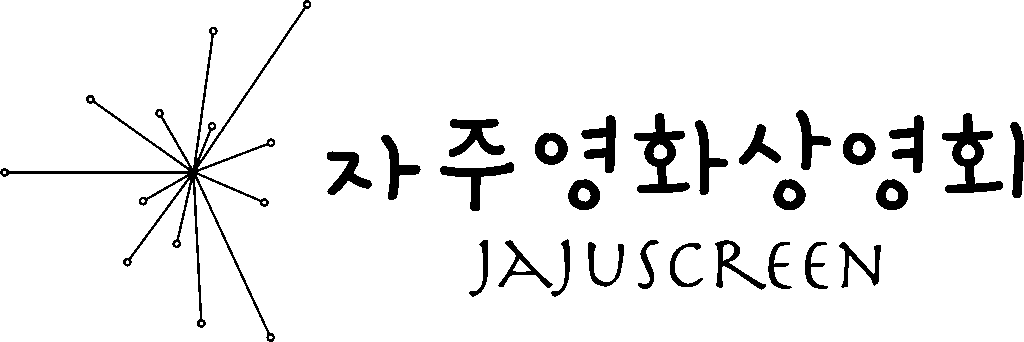/ Stephen Sarrazin (영화 및 영상 교수, 평론가, 큐레이터)
먼저, 여전히 활동 중인 영화감독 아다치 마사오의 독특한 위상에 대해 생각해보자. 그는 1960~70년대 일본의 핑크-정치 영화계에서 와카마츠 코지와 함께 중심 인물이었으며, 1971년에는 와카마츠와 공동 연출한 《적군/PFLP: 세계 전쟁 선언》을 만들었다. 그는 오시마 나기사와도 ATG 시기에 협업했다. 또한 그는 일본 적군파의 일원으로, 27년간 레바논에 거주하다 2000년에 일본으로 강제 송환되었으며, 귀국 직후 다시 글쓰기와 연출 활동을 재개할 수 있었다. 2022년에는 전 총리 아베 신조 암살 용의자에 관한 영화 《레볼루션 +1》을 발표했다.
《도주》는 또 다른 논란의 인물인 기리시마 사토시를 그린 초상화다. 그는 1974년에 테러리스트로 선언되었으며, 일본의 모든 파출소에 그의 사진이 걸려 있었고, 50년 넘게 경찰의 추적을 피해 다니다가 2024년 위암으로 사망하기 직전 의사들에게 자신의 신원을 밝힌 인물이다. 기리시마는 아이누와 한국인 공동체에 대한 식민지 착취를 추구하는 주요 산업가들을 상대로 투쟁한 동아시아반일무장전선(EAAJAF)의 일원이었다.
미쓰비시 중공업 본사에서 폭발 사고로 8명이 사망하자, EAAJAF는 해산을 결정하고 구성원들은 도주했다. 급진적 학생 운동의 일원이었던 기리시마는 새로운 신분을 만들기 시작했고, 일시적 노동자에 익숙한 중소기업의 잡다한 건설 일로 생계를 유지했다. 1980년대에는 버블 경제 호황으로 지역들이 활기를 띠었고, 도급업자와 기업가들은 노동력을 갈망했다. 그는 우치다 히로시라는 이름으로 덜 쫓기는 회사를 찾았다. 그의 고독과 장기적인 친밀한 관계를 맺을 수 없는 불가능성은 그로 하여금 자신의 기억과 의심, 헌신의 본질을 되돌아보게 했고, 결국 오랜 세월 비밀리에 투쟁을 이어왔음에도 무력감을 느끼게 했다.
이처럼 아다치는 ‘저항’이라는 단어의 의미가 해체되는 과정을, 마치 그것이 현대 일본 역사에서 지워진 것처럼 추적하면서도, 영화의 개봉을 통해 저항이 표현을 선택할 때 위협받거나 처벌받지 않는다는 사실을 보여준다. 마치 그 목적이 잊혀진 것처럼. 《도주》는 자신의 정치적 역사가 이제 신화가 된 감독의 경력에서 가장 완성도 높은 작품 중 하나다.
스기타 라이루가 젊은 기리시마 역을, 그리고 놀라운 연기를 선보이는 후루타치 칸지가 지하 망명자 우치다 역을 맡았다. 우치다는 일본 사회 변화를 예의주시하며, 다른 EAAJAF 구성원들의 체포와 자살 소식을 접한다. 그는 직원 기숙사의 소박한 방에서 음악을 듣고, 춤을 추며 라이브 밴드를 감상하며 견뎌낸다. 영화는 일본 기업들의 고난과 팔레스타인 문제 등 아다치가 여전히 지지하는 팔레스타인 대의에 관한 뉴스들을 라디오로 듣고 읽는 장면에 기악곡을 삽입해 강조한다.
이 영화에는 소수 개인의 시각에서 역사를 바라볼 때 끊임없이 질문을 던지는 장면이 매우 많다. 기리시마가 혼자서 싸워야 한다는 사실을 깨달았을 때, 그는 그 분노를 자신에게 돌린다. 프리 재즈 음악을 배경으로 펼쳐지는 후루타치와 스기타의 날카로운 대화는 일본 영화계의 이 투쟁적 시기를 상기시킨다. 이러한 자기비판의 연출을 통해 아다치 마사오는 오늘날 일본에서 이와 같은 영화를 만들 수 있는 수단과 목소리를 가진 유일한 감독임을 분명히 한다.
/2025.07.10
Let us first consider Masao Adachi’s singular status as a filmmaker still in activity. He was a central figure of Japanese pinku-political cinema of the 60s and 70s alongside Koji Wakamatsu, with whom he co-directed Red Army/PFLP: Declaration of War in 1971. He collaborated with Nagisa Oshima during his ATG period. He was also a member of the Japanese Red Army, who lived for 27 years in Lebanon before being deported to Japan in 2000, where he was able to get back to writing and directing shortly after his return. In 2022, he released Revolution + 1, about the alleged assassin of former Prime Minister Shinzo Abe.
The Escape is portrait of another controversial figure, Satoshi Kirishima, declared a terrorist in 1974, the man whose photograph adorned every Koban in Japan, who managed to evade the police for over five decades, before revealing his identity to his doctors shortly before his death from stomach cancer in 2024. Kirishima was a member of the East Asia Anti-Japanese Armed Front, which campaigned against major industrialists pursuing colonial exploitation of the Ainu and Korean communities.
When an explosion killed eight people at Mitsubishi Heavy Industries HQ, the EAAJAF decided to disband and its members fled. Kirishima, who had been a member of radical student movements, began creating new identities, living from odd construction jobs in SMEs accustomed to transient workers. In the ’80s, the regions experienced the economic boom of the bubble years; contractors and entrepreneurs were hungry for labor. He becomes Hiroshi Uchida and finds a company where he feels less hounded. His solitude, the impossibility of building long-term close ties and relationships, leaves him to examine his memories, his doubts, the nature of his commitments, culminating in a feeling of powerlessness, despite all those successful years keeping his struggle a secret.
In this way, Adachi traces the dissolution of meaning in the word resistance, as if it were written out of contemporary Japanese history, while demonstrating, through the film’s release, that it is not threatened nor punished when it chooses to express itself. As if its purpose had been forgotten.
The Escape is one of the most accomplished films in the career of a filmmaker whose own political history is now the stuff of myths.
Rairu Sugita stars as the young Kirishima and the extraordinary Kanji Furutachi as the underground fugitive Uchida. It’s Uchida who keeps a watchful eye on Japan’s social changes, learning about the arrests and suicides of other EAAJAF members. He endures by listening to music in his modest room in the employees’ dormitory, by going dancing and listening to live bands. Instrumental excerpts are used to punctuate the news he reads and listens to on the radio, from the fate of struggling Japanese corporations to that of the Palestinian cause, to which Adachi remains a loyal supporter.
There are so many scenes in the film that never cease to question history when it proceeds from the point of view of a small number of individuals. And when Kirishima realizes he’ll have to go it alone, he takes it out on himself. The biting exchanges between Furutachi and Sugita, set against a free jazz score, remind us of this militant period in Japanese cinema. Through this staging of an auto-critique, Masao Adachi makes it clear that he is the only director in Japan today who still has the means and the voice to make such a film.
